Without Apparent Reason
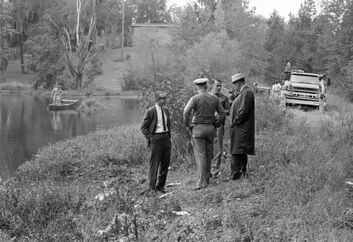 It was a week before Halloween, 1966, when a family was found tied up, gagged and slain in their home in the suburbs of Tallahassee. More than five decades have passed and the case remains unsolved.
It was a week before Halloween, 1966, when a family was found tied up, gagged and slain in their home in the suburbs of Tallahassee. More than five decades have passed and the case remains unsolved.
 641 Muriel Court, where the murders were committed October 22, 1966
641 Muriel Court, where the murders were committed October 22, 1966Robert W. Sims, 42, was an official for the Florida Department of Education. On a Saturday night, like most Americans he was at home with his wife Helen and his 12-year-old daughter Joy Lynn. He had just returned the day before from a trip to Washington D.C.
An older daughter, Nora "Jenny" Jeanette arrived home after a babysitting job just before midnight to a house that was quiet, too quiet. Like her sisters, they usually used the door from the carport to enter the house. She found it was unlocked, which was out of the norm. Only the television was on. She called out for her family, and finally made her way to the master bedroom, where she found all three of them dead or dying. Their hands were tied behind their backs and they were blindfolded.
Robert was on the bed, gagged and shot once in the head; he died before reaching the hospital. Helen was on the floor, also gagged, and shot twice in the head and once in the leg. She would die nine days later from her injuries. Joy gagged, and shot once in the head, had seven stab wound in the chest and abdomen. This was unusual since of all three victims, she would be the least problematic. She had been painting at the dining room table earlier that night.
Sims was dressed in pants and undershirt, his wife was fully clothed and Joy was in her nightgown. They were all barefoot.
The attacker was believed to have used a .38 caliber pistol. He used women's stocking, neckties and part of a woman's slip to bind the victims, and socks to gag them.
Around 10:45 p.m. a neighbor heard high-pitched screams, but they thought it was children. No one else in the area heard anything.
Early on, a state crime expert Ed Yarborough theorized that a sex pervert had committed the crime, he said in his opinion this was "the work of a sexually deranged person, a sex maniac. There are many types of perverts. There do not have to be signs of sexual molestation."
However Sheriff Joyce disagreed. Neither Helen Sims or her daughter had been sexually assaulted. He told newspapers, "We have questioned everyone who could give us the slightest information. We have eliminated several possible suspects. We have not enough to arrest anyone, but we are talking to everyone from disgruntled employees to known perverts."
Initially the detectives denied any sexual element against either female, later however, certain off the record comments suggested otherwise where it pertained to Joy. Her panties were pulled down, her shirt was pulled up and she had bloody handprints and bruises between her legs. She'd been beaten. It was obvious at that point to investigators the girl was the target of the break-in.
Some would argue the stabbing of Joy had a sexual component, and she had a bruise on her right cheek made by a ring. The assailant was left handed.
The police could not find a motive for the murder. Mr. Sims had working at his job as the director of data processing for close to 10 years. He was a U.S. Army veteran, and he was highly respected by his co-workers and neighbors.
Helen Sims was a part-time secretary to the associate minister of the Baptist church they attended. She had resigned a few days before. It seemed the main pastor, Dr. Roberts, had a reputation as a womanizer. Whether this had anything to do with Mrs. Sims resigning her post is unknown, however the pastor had a good alibi for the time the murder was committed.
Helen Sims died on Halloween, and the populace in Tallahassee which numbered about 80,000 were so scared that no children went trick-or-treating that year.
In the days that followed Tallahassee hardware stores reported that in a few hours they had run out of nearly 100 locks and chains.
The brick ranch house at 641 Muriel Court sat on a cul-de-sac, behind it was a wooded area. There was no sign of forced entry, and afterwards it remained sealed and only open to detectives who were searching for clues. This would lead detectives to believe the family knew the assailant, but perhaps it was just a knock at the door which Sims opened never imaging he had just allowed his murderer(s) to enter freely into his home. This could also explain how a 6'4" athletic man in the prime of life could be subdued. Perhaps he faced an assailant that pointed a gun to his face once he opened the door, or perhaps it was someone he didn't feel threatened by, like a woman for instance.
The family kept a shotgun which was in a closet, and never used.
There was no evidence of anything being robbed.
After the murder, the Sims other two daughters, Jenny, 16, and Judith Ann, 15, were sent to the care of their grandparents. Judy who had also been babysitting was spared the horror of what her sister found inside their home.
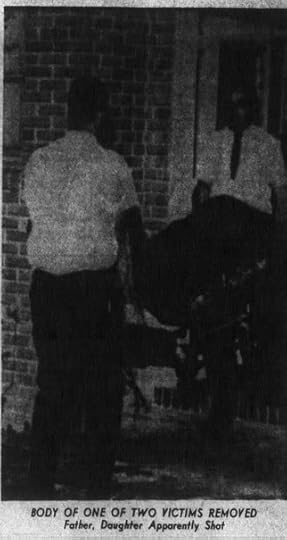 Victim's body being removed (Source Sun Tattler) After Jenny found her family in the bedroom, she stumbled to the kitchen to use the phone. This is when she noticed the front door was open; she couldn't remember seeing it this way when she arrived. Later this was to figure in the theory that whoever attacked the family had still been inside the home when she arrived.
Victim's body being removed (Source Sun Tattler) After Jenny found her family in the bedroom, she stumbled to the kitchen to use the phone. This is when she noticed the front door was open; she couldn't remember seeing it this way when she arrived. Later this was to figure in the theory that whoever attacked the family had still been inside the home when she arrived.Authorities found that intricate knots and bindings had been used on the family. This did not appear to be haphazard attack but something planned and thought out. Gags had been stuck deep into the mouths of the victims which probably were suffocating them slowly.
The methodology was reminiscent of the 1946 film The Killers, based on a story by Ernest Hemingway, where the murderers used household items.
Truman Capote's true crime story, In Cold Blood had been recently published. It detailed the 1959 murder of the Clutter family which had similarities to this crime.
As the investigation progressed in later days, it was found that all the items used to tie up the family had been taken directly from where they were at, as if the person knew ahead of time where to look. There had been no rifling of drawers or closets. It was almost eerie how undisturbed the house was.
Around 10:45 p.m. a girl babysitting in a house situated behind the Sims property heard what she thought was screaming. She checked on the child she was caring for but found everything was okay. Later she heard screaming again, shots and bursts of light caused by gunfire.
Another neighbor behind the Sims, heard 5 gunshots, then all went quiet. Two blocks away on Gibbs Drive, a scream was heard.
Later investigators learned that a young man from the neighborhood, described as slender, tall, about 21 years old, with glasses was seen walking away from Muriel Court around 11:15 p.m. He gave conflicting information as to where he was before and after the time the murders were committed, and what he was doing.
Another witness said they heard someone running through the woods that came up behind the yard of the house on Muriel Court. There was a ravine that started on the Sims property, where beyond it someone could have some mode of transportation waiting. There was also a trail that led to Stiles Pond.
An account described a white car by the junior high, which a neighbor thought it was suspicious, when it sped away towards Gibbs Drive. There was a ravine that started at the Sims property, where beyond it someone could have left some type of transportation. The white car would later be tied to suspects of the crime. Certain areas behind the Sims house showed where someone had cut back foliage in order to have a better view of the house. The position was hidden but would give a direct line of sight of the Sims house.
Over a thousand fingerprints were process, and sadly most of them belonged to law enforcement. It appeared the police had not kept the scene secure. The day after the murder, cars and gawkers came to the house. Tallahassee had not experienced a murder of this type before.
The police were unsuccessful in recovering the firearm or knife used in the murder. They dragged the nearby Stiles Pond in hopes of finding either one, but nothing came of the effort. In a 2017 podcast interview, former state prosecutor Jeremy Mutz described pertinent facts about the case, including suspects.
The young couple who were questioned by police was Vernon Fox Jr.,21, and his fiancée Mary Charles LaJoie, 19. Vernon's father was Dr. Vernon Brittain Fox who chaired the criminology department at Florida State University.
The couple were inseparable and were often seen together in the neighborhood. They had known each other since elementary school. People saw them at night walking the neighborhood and hiding behind trees. The parents of each of them did not approve of the relationship.
Fox had joined the Air Force and was kicked out four months later due to mental health issues. Strangely prior to his departure there had been an uptick of calls to the police about prowlers. They died away and resumed when he returned home in 1966. Was there any connection?
When the police spoke to them about their whereabouts and activity the night of the murders, they each provided the other's alibi, which at time became contradictory or changed from interview to interview. LaJoie missed classes the Monday after the murders.
Once Mary LaJoie admitted to investigator she had gone to the front door of the Sims home on the night of the murder, however she never said she had gone inside. She went on to draw a diagram of the interior of the house, which some would think would be impossible for someone unless they had been inside. The layout could not be guessed by someone standing on the outside.
LaJoie also appeared to have a troubled psyche. She was nicknamed "Morticia". She was fascinated with funeral homes and was caught going into some of them to see bodies. She was equally attracted to autopsies. Due to her strangeness she could not find any girl who wanted to share a dorm room with her.
In 1967 she wrote a paper about this case titled The Sims Murder Theory and presented it to her English class. The motives she gave for the crime were: 1. sex; 2. revenge; 3. anger. She wrote that she felt sex was the motive, and the little girl being the target.
She went on to describe to her teacher that she wanted to have sex with the blood of fresh bodies, and that she carried a small knife with a 3 or 4 inch blade. She was born left handed but was made to use her right hand, making her ambidextrous.
In April 1966, Fox gave LaJoie an engagement ring, which might have caused the wound on Joy's cheek. Later it was ascertained she had learned how to tied specialized knots and bindings via time spent as a Girl Scout. Also her father was a rigger and electrician for the FSU circus. There she learned to tie different knots used in circus tents.
The day after the murder LaJoie rode her bike to the murder house, and approached police outside. She asked "How is Mrs. Sims getting along?" She went to the Sheriff's on more than one occasion and asked, "Do you think I could have done this and not remembered it?"
It seemed she was concerned Mrs. Sims would recover from her injuries, and be able to identify who killed her husband and daughter.
According to Mutz, it seemed Dr. Fox, who was well connected made phone calls, and his message was clear: either arrest my son or stop questionning him.
LaJoie and Fox went on to marry, and then divorce. At various times they spoke to law enforcement or posted content on the internet to tease about the possibility they were the culprits.
After 1987, LaJoie spoke one last time to law enforcement, and faded from commenting any further on the crime. Vernon Fox Jr, was interviewed by a documentary crew at FSU in 2016, and also made statements on the internet, some of which have been removed.
During that time there were also rumors that Fox was suspecting of mutilating ponies in a farm north of town. There was also whispers the couple did things to animals during the times they would skulk in the woods.
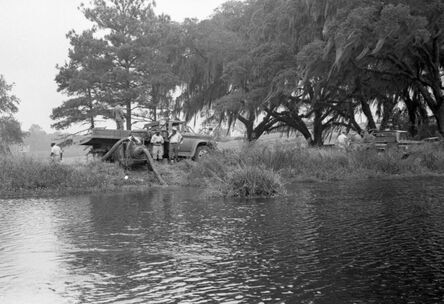 City draining lake near murder scene in Tallahassee to search for evidence c.1966
Other Suspects
City draining lake near murder scene in Tallahassee to search for evidence c.1966
Other Suspects
Pastor C.A. Roberts was involved in an affair with a 25-year-old divorcee. He was known to have young women coming and going into his office. However a womanizer, does not a murderer make. He was the chaplain for the football team and was seen on the film that night during the FSU vs Mississippi U., giving him a solid alibi of his whereabouts the night of the murder.
Roberts was killed years later in a traffic accident. The probing into his life prompted him to step down as pastor within months of the murders.
Thomas A. Fulghum, grew up in Tallahassee, and lived close to the Sims family on Mary Beth Avenue. He was fifteen years old and had just started 9th grade.
In 1979, the Tallahassee Police Department interviewed him due to a crime he committed many years after the murder on Muriel Court. On July 13, 1979 he was found guilty of malice murder and sentenced to life imprisonment. He killed Dale Pirnie a woman he had known for a short time.
He was found standing outside the apartment complex where she lived holding a quart jar and covered in blood. Inside the jar was one of Pirnie's internal organs. He asked for an ambulance and said, "Something bad happened." He had also severed a finger from his left hand.
Police followed a trail of blood to an apartment with a broken sliding glass door. Pirnie was in the bedroom. All her organs from her her windpipe to her genital area had been removed. A 12-inch butcher knife was stuck into her naked, upper torso. Other internal organs were found in the bathtub, and others on the floor of the living room and kitchen. A plate of food was left less than foot from Pirnie's head. Two days later, Fulghum's finger was found.
An autopsy found that she had received 44 separate stab wounds which caused her death.
Later, Fulghum told a doctor that Pirnie's face had turned into Satan, and that she was possessed by him. Unless certain organs in her body were removed, Satan would return to earth. His left hand was also evil, and God told him to cut off his finger in order to scar himself as proof of his battle with Satan. The jar he carried was a trophy.
Fulghum was diagnosed as a chronic paranoid schizophrenic who suffered delusional compulsions triggered by religious stimuli. His disease was incurable. Prior to Pirnie's murder he had been hospitalized three times due to psychotic episodes.
His family, and other friends testified he had been normal until 1975 when he became obsessed with religion.
Despite the gruesomeness of Fulghum's crime, there was no torture or anger aspect to it, unlike what happened to Joy Simms. Neither of the Sims daughter reported ever seeing Tommy Fulghum watching them.
After he was honorably discharged from the Navy, his girlfriend traveled cross country with him, and he never mentioned anything about the Sims family.
Fulghum died December, 1996.
An early 2016, a taskforce was assembled between different Florida law enforcement agencies to share information and theories in order to solve the cold case. For some unknown reason within a few months it was dissolved.
The family was buried at Hebron Baptist Church Cemetery in Mississippi, and the two surviving daughters were adopted by their maternal aunt, Jo Karr.
The houses on the street remained impossible to sell for years after the murder, and until this date the case remains unsolved.
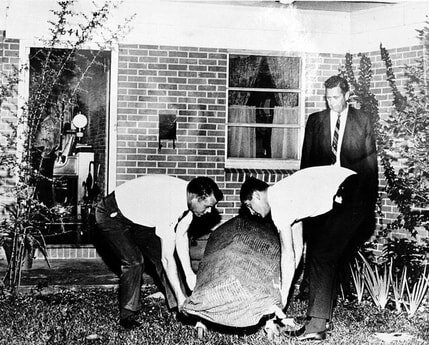 A body being removed from the Sims home (Source Ocala Star Banner) One has to wonder if there was not some occult connection to the murder. It occurred one week before Halloween. Samhain is regarded as the Witches' Sabbat, the equivalent of their New Year's Eve.
A body being removed from the Sims home (Source Ocala Star Banner) One has to wonder if there was not some occult connection to the murder. It occurred one week before Halloween. Samhain is regarded as the Witches' Sabbat, the equivalent of their New Year's Eve.Some theorize the crime was committed on that Saturday night because of the distraction offered by the football game, but perhaps there were other reasons for the timing. The following weekend on the 29th there would have been a full moon, and if you're planning a murder at night, the last thing you need is illumination after dark in order to be seen better.
If timing was not important, why not wait until another day when Dr. Sims would not have been at home. A physically fit man would have been a significant impediment, unless waiting would spoil the intent of what could be interpreted as the sacrifice of a virgin.
Perhaps there was occult symbology left at the crime scene that the police force did not know how to recognize for what it was.
There is always hope the Sims family will get justice.
Like the case of Irene Garza who was murdered in 1960. Her case remained unsolved until 2016, when an ex-priest was convicted of her murder.


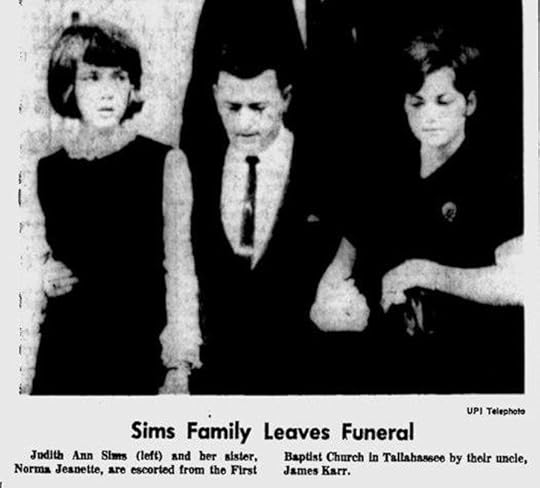

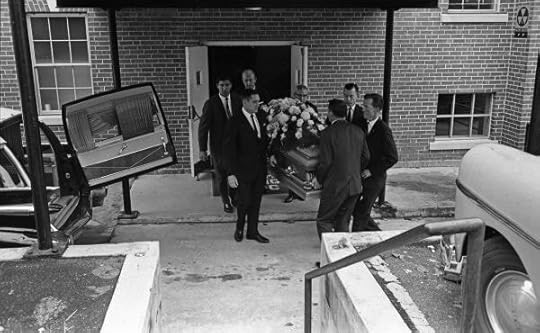

Published on October 04, 2022 08:00
No comments have been added yet.



